| 1 | Daggers for fangs |
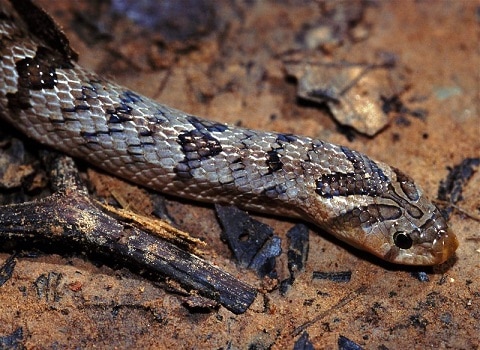
The small-banded kukri snake is a small southeast Asian snake, which has only a mild venom and has never killed a human being. They’re found in most of Thailand, plus Vietnam and Cambodia, and stick to the ground, rarely climbing trees. This species measures 60-80cm, and is flexible in its habitats, ranging from forests to fields to grassy verges by paths in villages. The kukri snake (Oligodon) family has 80 members, some obscure, but this is one of the more widespread.
Unlike monocled cobras, small-banded kukri snakes coexist with humanity without triggering heart attacks and intense superstitious fear. So far so good, but this snake has a separate weapon: an extremely sharp pair of teeth, which are optimised for slashing wounds. The kukri name references the kukri dagger, the national weapon of Nepal, a curving, razor sharp knife typically carried by Gurkha soldiers, which was first refenced in texts from 7th century AD.
Small-banded kukri snakes use these jagged teeth for slashing through egg shells, before sucking the contents free. An old, disproven theory was that they’re used for holding fast lizards in their mouth. Eggs form a decent chunk of the small-banded kukri snake’s diet, but the teeth have a much more horrifying usage as well.
| 2 | Slashes open toad bellies |
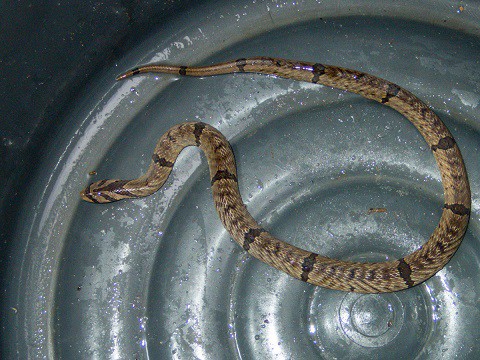
At first glance, small banded kukri snakes are an innocuous species. They don’t hiss at you, or glare with murderous intent while rearing their chest. But behind this mild façade lies one of the most brutal hunting styles in the snake kingdom.
Kukri snakes prey mainly on amphibians, particularly frogs and toads. Some are swallowed whole, but for others, they use their brutal teeth to slash their belly open. Then, they poke their head into the toad’s belly and swallow their organs. They pull out the heart, liver, lungs and stomach, and gulp them down one by one.
These organ-slurping ways are unique in the snake kingdom. The golden tree snake of Thailand has long been rumoured to poke its head into a gecko’s stomach and eat its parasites. That’s just a piece of folklore, but Oligodon fasciolatus actually does something similar. Most brutally, some of the toads are still alive as their organs are stolen. It must be a horrific way to die. Imagine facing a 3 metre kukri snake, the size of a python, which is capable of doing the same thing to large mammals, like great apes (AKA us).
| 3 | A natural organ snatcher |
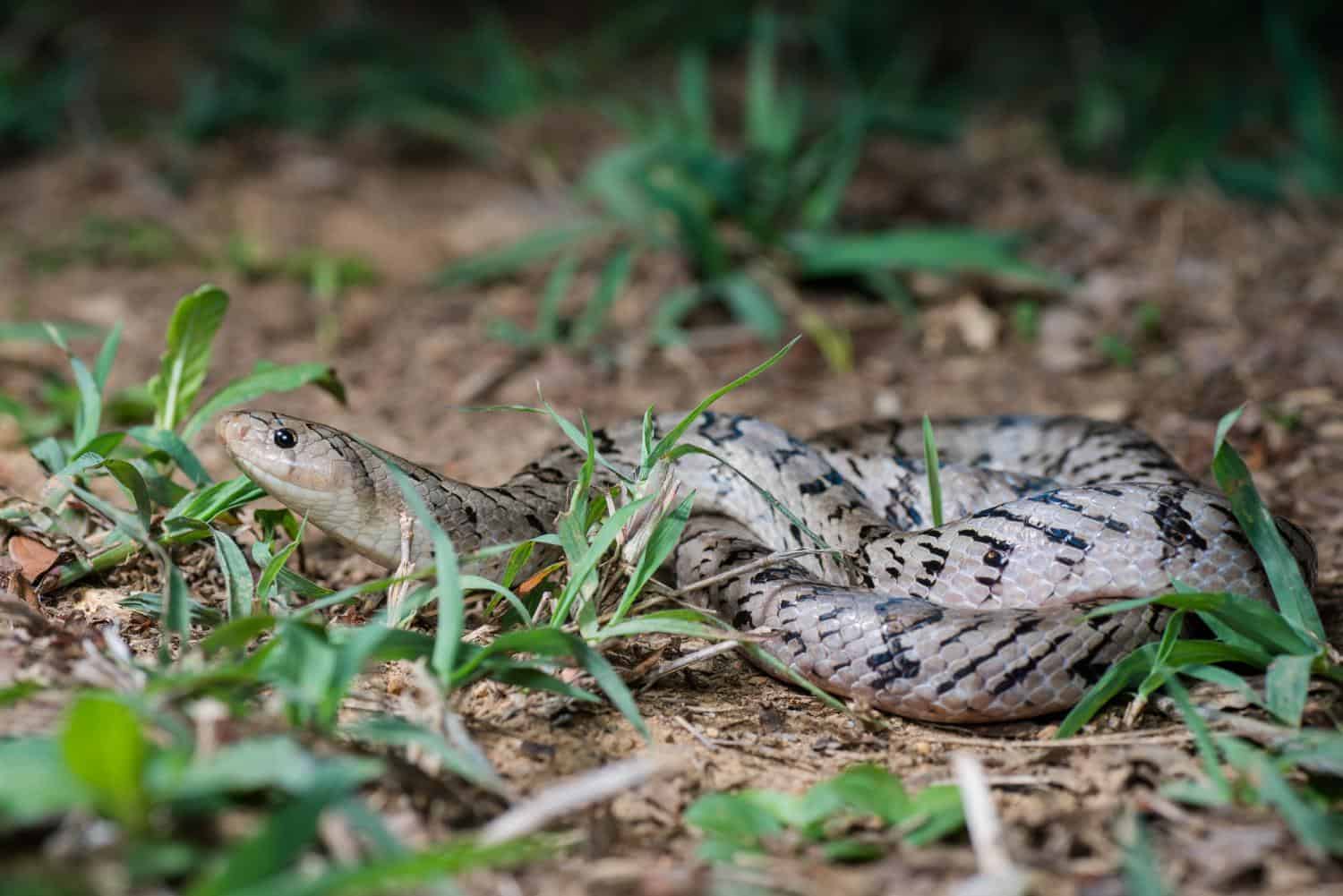
Small-banded kukri snakes have perfected the slashing manoeuvre, swinging their heads from side to side to shred the toad’s belly in an explosion of gore. Somehow, they have expert senses not only to thrust their head into the toad, but locate its organs with laser efficiency.
This whole organ stealing strategy was discovered in a 2016 study, despite having probably taken place under our noses for millions of years. 3 events were observed near Loei in northeast Thailand, on an estate belonging to two of the study’s authors. The first case involved a large female kukri snake, and a common Asian toad, an extremely abundant species in Thailand. The toad was already dead when the scientists arrived, but the soil nearby was stained with blood, hunting at a prolonged battle. The kukri snake used its enlarged teeth to slit an opening in the toad’s left abdomen, near its left front leg. Then it pulled out its liver, heart, lung, and part of the gastrointestinal tract.
While keeping its mouth open, the kukri snake subtly swung its head in different directions, to cut the organs into pieces, which it then swallowed. Two millipedes, one brown and one red, also arrived, attracted by the toad gore on the floor. Once it was done, the kukri snake rubbed its head against the soil to remove the intestines and millipedes.
| 4 | Duels toads for 3 hours |
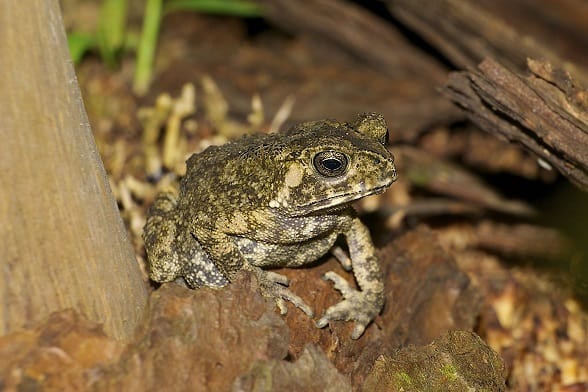
The second observation was by far the most brutal and detailed. It took place on the same grassy estate in northeast Thailand, just 15 metres from the first over three years earlier. It again involved a common Asian toad and a small-banded kukri snake. The setting was the shore of a pond, and when the observers arrived, the kukri head’s snake was already in the toad’s abdomen. The toad was still alive, and attempted to reach the safety of the pond.
The kukri snake withdrew its head, possibly for oxygen. The toad then sprayed a fine mist of poison, some of which struck the snake. Even more white poison fluid gushed down the toad’s back and onto the snake’s head. The toad hopped away, while the kukri snake used leaf litter to wipe the poison from its head. The snake hid below a log. 10 minutes later, it remerged to search for the toad again, which was still alive, despite having had a snake’s head thrust into its belly. The toad hopped towards the pond, but the kukri snake seized its hind leg. More white poison dripped onto the kukri snake, which again retreated and wiped its eyes. The desperate struggle continued. The toad swam to the pond shore and tried to hide under a log for 30 minutes.
Eventually, the kukri snake grabbed its body again, and reinserted its head into the previous gaping wound in the abdomen. This time, it managed to rip out the toad’s lung and some muscular tissue. The toad was now motionless, but still breathing. The kukri snake had almost won, but now they were joined by a new arrival. This time, it was a far deadlier foe than millipedes. A swarm of red ants arrived, and attempted to assault both the kukri snake and toad. The snake fled, having defeated the toad, but been blocked from its meal at the last minute. Overall, the battle lasted nearly 3 hours, ending at 16:00.
| 5 | Targets mice too |
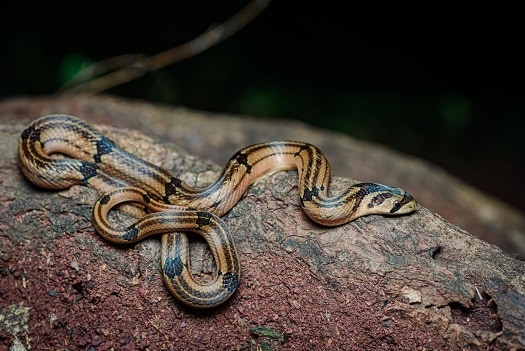
According to this reptile keeper, mice aren’t exempt from their slashing ways either. The guy decided to give his Oligidon fasciolatus pets a larger meal, a mouse. This proved too large and was spat out, covered in a snake slime.
Later, the kukri snake’s head appeared to be beneath the mouse. Investigation revealed a different reality: its head was inside the mouse. It continuously rummaged around, attempting to exit the abdomen via a new hole before giving up. The owner checked the mouse to find it completely empty. Its organs were gone.
The keeper was flabbergasted. He was amazed at how the kukri snake instinctively targeted the soft flesh of the mouse’s belly to make the incision. This report was published in 2015, so the keeper had accidentally discovered the organ burglary a full year before science made it official in 2016. It also proved that they use them for creatures other than amphibians.
| 6 | A next level hunter |
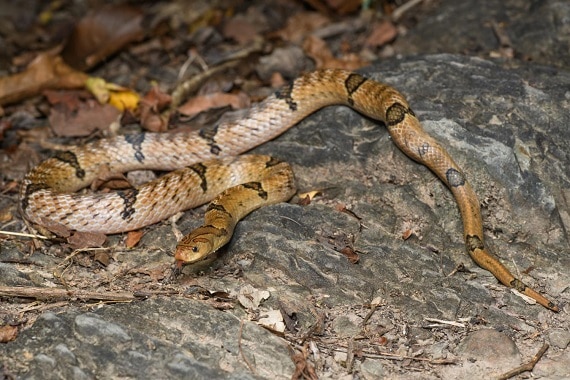
As well as snatching their organs, small-banded kukri snakes also swallow toads whole. Common Asian toads are confirmed, as well as banded bullfrogs (Kaloula pulchra). While they try furiously to wipe a toad’s white frothy poison from their face, they surely have some resistance to these bufotoxins if they can swallow their makers whole. Oligodon fasciolatus are theorised to have anticoagulants in their venom too, as the wounds they inflict seem to be bleed disproportionately. It may be just one or two toxins in their saliva, which obliterate clotting factors like fibrinogen.
When they eat eggs, they act similarly with toads; slash open the shell with their teeth, thrust in their head, and begin sipping the contents. This can be an egg with or without an embryo. Unlike a Japanese ratsnake, they don’t swallow eggs whole.
Small-banded kukri snakes have a flexible diet overall. As well as eggs and toads, they’re happy to eat lizards and small mice. They’re a weird snake in that they have super-specialised hunting techniques, yet eat a variety of prey. For example, slug snakes are specially adapted to suck slimy bodies from shells, and they won’t eat “normal” prey like lizards. Oligidon fascioliatus is simply a next level snake which has special slashing techniques for no reason other than being overpowered. No wonder they’ve become so common in southeast Asia.
| 7 | Don’t pick them up |
As a family, the kukri snakes might be the worst non-venomous (or barely venomous) snake to be bitten by. Reticulated pythons have jumbo fangs, but it’s the small-banded kukri snake’s hunting instincts that make them such a threat. Lycodon fasciolatus tolerates no nonsense. If you pick them up, they’ll almost certainly snap down on your hand. Then they’ll deploy the same slicing techniques they use for eggs or toad bellies.
They’ll wrestle their teeth from side to side, inflicting a grisly wound on your flesh, way beyond a painful pinprick. Lycodon fasciolatus wounds can easily draw blood and require a plaster, in fact they probably will. They’re determined to do damage, and more than capable of it.
Like many snakes, Lycodon fasciolatus can be tricky to predict. However, they’re considered to be particularly aggressive for the kukri snake family, many of which are docile. Newborn kukri snakes will also snap and bite. Grabbing one by the head won’t keep you safe, as they have surprisingly flexible jaws.
| 8 | Pokes people with a sharp tail |
The same reptile enthusiast from earlier was often snapped at by his small-banded kukri snakes. He wore leather gloves, and his pets were still capable of piercing them with their savage teeth. He had also kept white-lipped pythons and bull snakes, which both measured roughly two metres. He barely felt anything from their bites while wearing leather gloves.
They have a secondary weapon too: a sharp tail, which they poke aggressors with, in the confusing case that they decided not to use their teeth. Another feature is modified scales on their snout, which they use in the wild to shift aside soil.
While not a fully fledged burrower, small-banded kukri snakes love to hide under cover. In the Thai countryside, they can be found beneath leaf beds, fallen vegetation, rotting logs, stones and natural root hollows. With their brown colours, they blend in effortlessly. Yet they’re not a lazy snake, and travel decent distances per day. Not every snake is capable of winning a three hour battle with a toad.
| 9 | ID guide: head markings |
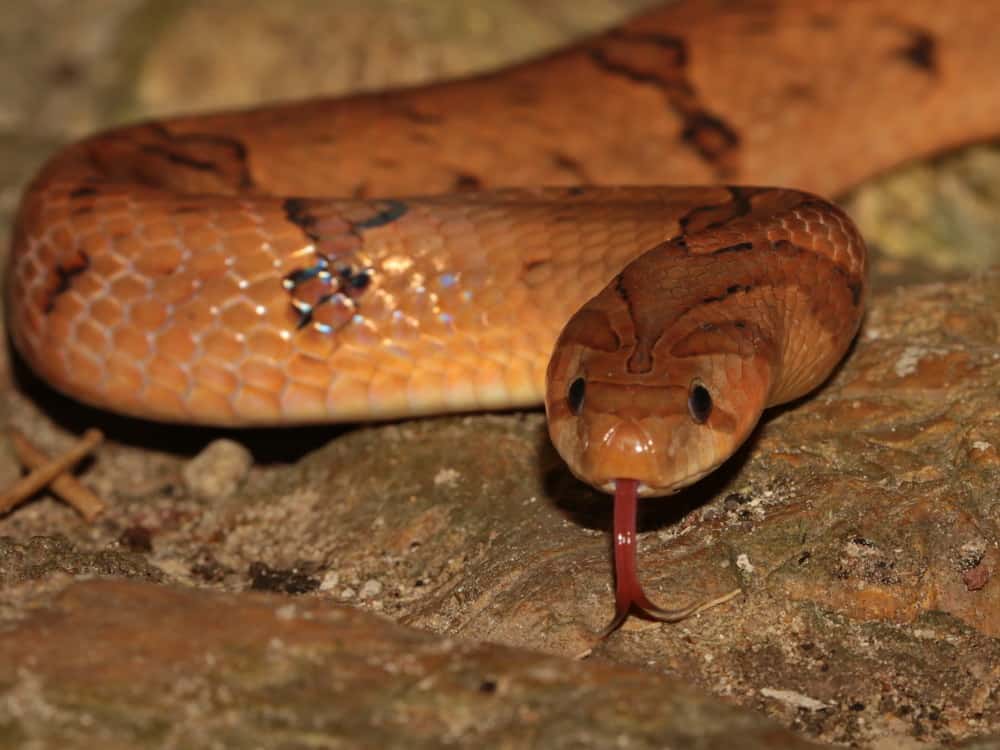
Lycodon fasciolatus isn’t an instantly recognisable snake. There are no flashy green patches or neon orange stripes to instantly give the game away. However, there’s subtle signs to watch out for. Like all kukri snakes, its head is narrow and barely separate from its neck. Oligidon fasicoloatus is mainly a brown colour, sometimes red. Covering its body are darker brands which vary in thickness, some like bars and others like razor thin slashes.
The head markings are a key sign. There’s a dark marking below each eye, spreading down like a tear drop, and the eyes are also connected by a marking. Viewed from above, their lower head and neck contain more finely arranged markings. If you block out the real eyes and tongue, the complete set of markings almost resembles a laughing face (try it above).
Lycodon fasciolatus is one of the longer of its family, as well as more aggressive. The confirmed records so far are 92.0cm in males and 86.3cm in females.
| 10 | Easy to misidentify |
Thailand currently has a whopping 21 confirmed kukri snake species. Many are obscure, living in just the north, or one mountain range in the southwest. The striped kukri snake (Oligodon taentius) is the most widespread after Oligidon fasciolatus, and easily separable, with vertical stripes down its spine and flanks, rather than encircling bands. However, small-banded kukri snakes are variable in colour. Brown is classic, while brick red and steel grey also appear. Likewise, the stripes are occasionally vertical similarly to their neighbour. This is a tricky species to identify. The facial markings are undoubtedly the best sign.
Small-banded kukri snakes are egg-laying and produce an average of 15 per clutch. The eggs are white and nearly round in shape, rather than long like a vitamin capsule. According to the 2015 report, mothers sometimes eat their own eggs, undoing all their own hard work.
This is also a wrestling snake. When two Oligidon fasciolatus males meet, they’ll coil their lower bodies around each other, and play a game of attempting to elevate one’s head above the other, and forcing the rival’s head down to the ground. Despite their infamous slashing teeth, they don’t use these obvious weapons while wrestling, preferring slow, ritualised combat instead.
